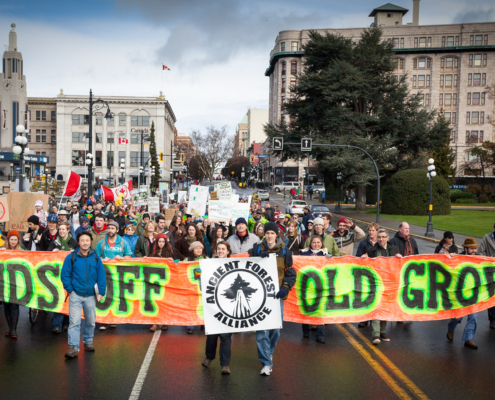
Global TV News – Protesters Want Government to Protect Old-Growth Forests
About 500 people protested in front of the BC Legislature on Saturday afternoon to bring awareness to the loss of B.C. endangered old-growth forests. Organized by the Ancient Forest Alliance, the group wants the BC Liberal government and the NDP to commit to an plan that will protect B.C.'s old-growth forests, and ensure sustainable, second-growth forestry jobs.

The fight to protect what’s left of old-growth forests
British Columbia is the last place in Canada where you can still find ancient, monumental trees standing outside parks. We are not talking here just about big, old trees, but about trees 250 to 1,000 years old, that tower 70 metres in height. If one grew on the steps of Parliament, its tip would block out the clock face on the Peace Tower. And set down in Vancouver, they would be as tall as many office towers.
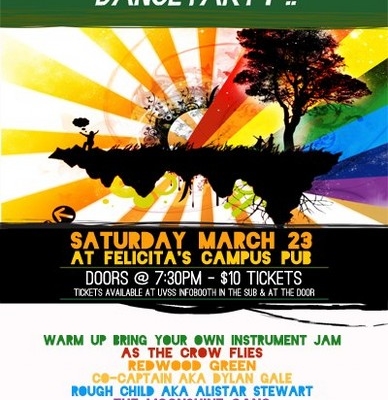
The UVic AFA’s 3rd Annual Tree Huggers Ball Dance Party Extravaganza Fundraiser this SATURDAY March 23rd!
The UVic Ancient Forest Committee will be hosting their 3rd Annual Tree Huggers Ball this coming Saturday March 23rd from 7:30 pm to 1:00 am at Felicita's Pub, 3800 Finnerty Rd., Victoria, BC.
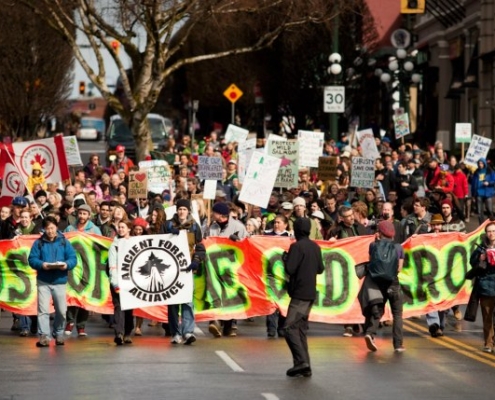
Diverse Crowd of 500 Environmentalists, First Nations, Forestry Workers and Business Owners call for Political Leadership to Protect Old-Growth Forests and Ensure Sustainable Forestry Jobs
About 500 people in a diverse crowd of conservationists, forestry workers, First Nations, business owners, and union members showed up today in the heavy rain in Victoria for a rally organized by the Ancient Forest Alliance. Despite the morning downpour, spirits were high, and the clouds parted as the protesters marched their way towards the BC Legislative buildings from Centennial Square.

Today’s CHEK TV news clip on the battle to stop Island Timberlands from logging the mountainside above Cathedral Grove!
22,000-Strong Petition Calls on BC Government to Protect BC’s Old-Growth Forests, Ensure Sustainable Second-Growth Logging, and to End Raw Log Exports
The groundswell of citizens’ support for new, sustainable forest policies in BC, only 2 months before a BC election, will be evident today with the introduction of the “Petition to Protect British Columbia’s Endangered Old-Growth Forests and Forestry Jobs” into the Legislative Assembly on its last day this session by NDP MLA Scott Fraser (Alberni – Pacific Rim) this afternoon.
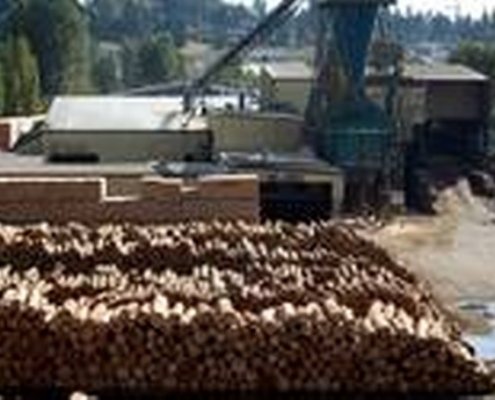
Tourism in the Discovery Islands feels the force of logging
"It’s heart-wrenching,' Ralph Keller, a spokesman for the Discovery Islands Marine Tourism Group, said Tuesday. 'The Discovery Islands are probably the most geographically spectacular islands in the world … [but] in some places we have gone from beautifully forested shorelines to industrial logging … these channels have just been nuked."
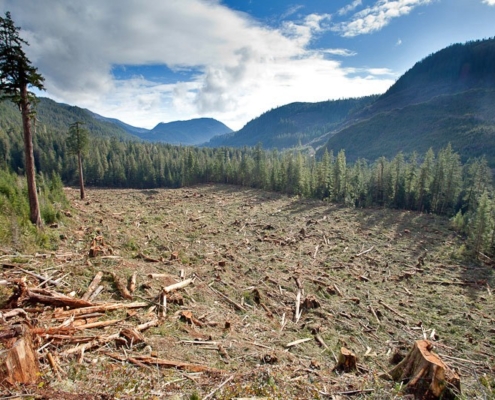
Environmentalists approve Liberal move on forest tenure
"It would have made it harder to establish new protected areas, to protect scenery, and tourism opportunities. It would have made it more lengthy and difficult and complex to settle First Nations treaties, and it would have also taken away a lot of lands that communities would have wanted for community forestry."
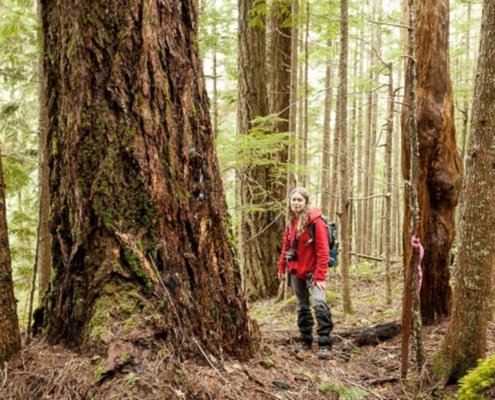
Old growth near Cathedral Grove set for imminent logging: activists
"They are totally wrong to do this,' he said. 'Habitat means it is the animals’ home. If someone takes your house away and you have to live on the streets, you won’t die right away, but your life will be short and your reproductive chances are going to be slim."

CHEK News – Cathedral Grove Threatened by Logging
CHEK News coverage of proposed logging by Island Timberlands in old-growth forest only a few hundred metres from the world famous Cathedral Grove in MacMillan Provincial Park on Vancouver Island.
